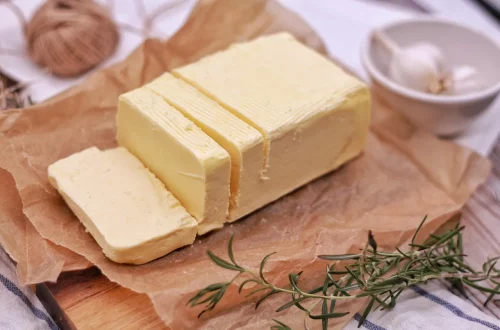
Essential Guide to a Bland Diet for Cats: Benefits and Tips
A bland diet, often characterized by its simplicity and ease of digestion, can be an effective way to support a cat’s health during times of gastrointestinal distress or recovery from illness. This type of diet typically includes easily digestible foods that are gentle on the stomach, which can be crucial for cats experiencing issues like vomiting, diarrhea, or other digestive problems. The bland diet concept isn’t just about limiting variety; it’s about providing comfort and nourishment in a way that minimizes irritation to the cat’s digestive system.
Cats, being obligate carnivores, have unique nutritional needs. However, there are times when their usual diet may need to be adjusted to promote healing and recovery. The rationale behind a bland diet is to avoid triggering further gastrointestinal upset while still providing essential nutrients. This dietary approach can help stabilize a cat’s condition, allowing them to gradually return to their regular feeding routine once they begin to feel better.
Understanding how to implement a bland diet effectively requires knowledge of the appropriate food choices and preparation methods. By focusing on the specific needs of your feline friend, you can ensure that they receive the benefits of a bland diet without compromising their health or well-being.
Understanding the Benefits of a Bland Diet for Cats
A bland diet can offer numerous benefits for cats facing digestive issues. One of the primary advantages is its ability to reduce gastrointestinal irritation. Cats suffering from conditions such as gastritis, pancreatitis, or food allergies may find relief when switched to a bland diet, which contains less complex ingredients that are easier to digest. This can help alleviate symptoms like nausea, vomiting, and diarrhea, allowing the digestive system to rest and heal.
Moreover, a bland diet can help stabilize a cat’s appetite. When a cat is unwell, they may lose interest in food, making it challenging to maintain their nutritional intake. By offering palatable, soft foods, you can encourage your cat to eat, which is essential for their recovery. Foods like boiled chicken or plain rice are often well-received, making it easier for owners to coax their pets into eating.
Another significant benefit is the reduction of stress on the liver and kidneys. Cats with pre-existing health issues may need extra care when it comes to their diet. A bland diet can provide the necessary nutrients without overburdening these vital organs. This is particularly important for older cats or those with chronic health conditions, where the risk of complications is higher.
Lastly, the simplicity of a bland diet can offer peace of mind for pet owners. Knowing that you are providing your cat with food that is gentle on their system can alleviate some of the worry that comes with caring for an unwell pet. A well-planned bland diet can serve as an effective interim solution while monitoring your cat’s health and consulting with a veterinarian if needed.
Key Ingredients for a Bland Diet
When choosing ingredients for a bland diet, it’s essential to focus on those that are both digestible and nutritious. The most common components of a bland diet for cats include protein sources and carbohydrates.
For protein, boiled chicken or turkey is often recommended. These lean meats are gentle on the stomach and provide necessary protein without excessive fat that could exacerbate digestive issues. It’s crucial to prepare the meat without any seasoning or additives, as these can irritate your cat’s digestive system. Another option is plain boiled fish, which can also be appealing to cats and is rich in omega-3 fatty acids.
Carbohydrates can be provided through plain white rice or sweet potatoes. These sources are easy to digest and can help bind stool in cases of diarrhea. Both options are suitable for mixing with protein sources to create a balanced meal.
In addition to these primary ingredients, some cat owners may consider incorporating canned pumpkin into their cat’s diet. Pumpkin is high in fiber and can aid in digestion, making it a helpful supplement in a bland diet for some cats. However, it should be introduced gradually, and it’s essential to use pure pumpkin without any added sugars or spices.
Hydration is also a key aspect of a bland diet. Ensure that your cat has access to fresh water at all times, as dehydration can occur if they are experiencing gastrointestinal issues. Some cats may prefer broth made from boiling chicken or turkey, which can help keep them hydrated while providing some flavor.
Lastly, always consult with your veterinarian before making significant changes to your cat’s diet, especially if they have pre-existing health conditions or are on medication. They can provide guidance on the best ingredients and portion sizes based on your cat’s specific needs.
Transitioning Your Cat to a Bland Diet
Transitioning your cat to a bland diet should be done carefully and gradually to prevent any additional digestive upset. Start by introducing small amounts of the bland food alongside their regular diet. This can help ease the transition and allow your cat’s system to adjust to the new foods.
Begin by mixing a small portion of the bland diet with their regular food, gradually increasing the proportion of bland food over several days. Monitor your cat’s response during this transition period. If they show signs of discomfort or their symptoms worsen, it may be necessary to revert to their previous diet and consult with a veterinarian.
Once your cat seems to tolerate the bland diet without any adverse reactions, you can continue to feed it for a few days or as advised by your veterinarian. Keep an eye on their hydration levels and overall demeanor. If they appear more energetic and their symptoms begin to improve, you can consider reintroducing their regular diet slowly.
When reintroducing regular food, proceed with caution. Start with small amounts of their usual food mixed with the bland diet, gradually increasing the amount of regular food over time. This method can help prevent any sudden digestive issues that may arise from a quick change back to their regular diet.
Always keep an open line of communication with your veterinarian during this process. They can provide valuable insights based on your cat’s unique health status and help ensure a safe transition back to their regular feeding routine.
Signs Your Cat May Need a Bland Diet
Recognizing when your cat may benefit from a bland diet is crucial for their health and well-being. Several signs can indicate that your feline friend is experiencing gastrointestinal distress or other issues that may warrant a dietary change.
One of the most common signs is vomiting. If your cat vomits repeatedly or shows signs of nausea, it may be time to consider a bland diet to help soothe their stomach. Additionally, diarrhea or loose stools can indicate digestive upset, and a bland diet can help firm up their stool while providing essential nutrients.
Loss of appetite is another significant indicator that your cat may need a dietary adjustment. If your cat is refusing to eat or seems disinterested in their food, it could be a sign of an underlying issue. A bland diet can sometimes help stimulate their appetite and encourage them to eat again.
Other signs to watch for include lethargy, excessive grooming, or changes in behavior. If your cat appears unusually tired, withdrawn, or is grooming themselves excessively, it may point to discomfort or stress that could be alleviated with a simpler diet.
In any case, if you notice any of these symptoms persisting for more than a day or two, it is essential to consult with your veterinarian. They can help determine the appropriate course of action based on your cat’s specific needs and health status.
**Note:** This article is not intended as medical advice. If your cat is experiencing health issues, please consult your veterinarian for professional guidance and recommendations.




